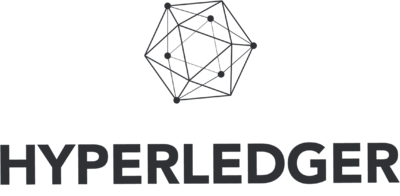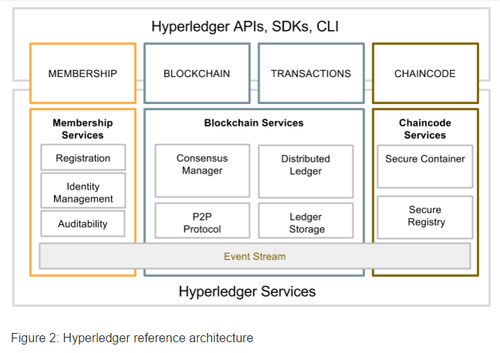Hyperledger

Hyperledger (or the Hyperledger project) is an umbrella project of open-source blockchain and related tools[1], started in December 2015 by the Linux Foundation, to support the collaborative development of blockchain-based distributed ledgers.
Hyperledger is a collaborative effort that was created to advance blockchain technology by identifying and addressing important features that can assist various industries and applications. It is focused on creating an open standard for distributed ledgers that can transform the way business transactions are done.
Contents
Hyperledger does not support Bitcoin or other cryptocurrencies. But the platform is excited about blockchain technology. The web site says that since the Web was not “technology promising wider and more fundamental revolution than the blockchain technology.”Blockchain potential” is the construction of a new generation of transactional applications that establish relationships of trust, accountability and transparency at their core while optimizing business processes and legal restrictions.”
Hyperledger Project Review
In December 2015, the Linux Foundation announced the creation of the Hyperledger Project. The founding members of the project were announced in February 2016 and ten further members and the makeup of the governing board were announced March 29.[2] And on May 19, Brian Behlendorf was appointed executive director of the project.
The objective of the project is to advance cross-industry collaboration by developing blockchains and distributed ledgers, with a particular focus on improving the performance and reliability of these systems (as compared to comparable cryptocurrency designs) so that they are capable of supporting global business transactions by major technological, financial and supply chain companies.[3] The project will integrate independent open protocols and standards by means of a framework for use-specific modules, including blockchains with their own consensus and storage routines, as well as services for identity, access control and smart contracts.
In early 2016, the project began accepting proposals for incubation of codebases and other technologies as core elements. One of the first proposals was for a codebase combining previous work by Digital Asset, Blockstream’s libconsensus and IBM’s OpenBlockchain. This was later named Fabric was incubated.[4]
Early on there was some confusion that Hyperledger would develop its own bitcoin-type cryptocurrency, but Behlendorf has unreservedly stated that the Hyperledger Project itself will never build its own cryptocurrency.
On 12 July 2017 the project announced its production-ready Hyperledger Fabric 1.0 and it started to gain popularity in the ICO market. In August 2017, Oracle joined the Hyperledger consortium and announced its Blockchain Cloud Service offering.
Consortium members and governance
Early members of the initiative included blockchain ISVs, (Blockchain, ConsenSys, Digital Asset, R3, Onchain), well-known technology platform companies (Cisco, Fujitsu, Hitachi, IBM, Intel, NEC, NTT DATA, Red Hat, VMware), financial services firms (ABN AMRO, ANZ Bank, BNY Mellon, CLS Group, CME Group, the Depository Trust & Clearing Corporation (DTCC), Deutsche Börse Group, J.P. Morgan, State Street, SWIFT, Wells Fargo), Business Software companies like SAP, Systems integrators and others such as: (Accenture, Calastone, Wipro, Credits, Guardtime, IntellectEU, Nxt Foundation, Symbiont).
The governing board of the Hyperledger Project consists of twenty members chaired by Blythe Masters, (CEO of Digital Asset), and a twelve-member Technical Steering Committee chaired by Christopher Ferris, CTO of Open Technology at IBM.
Hyperledger technology
Hyperledger Burrow
Burrow[5] is a blockchain client including a built-to-specification Ethereum Virtual Machine. Contributed by Monax[6] and sponsored by Monax and Intel.[7]
Hyperledger Fabric
Hyperledger Fabric is a permissioned blockchain infrastructure, originally contributed by IBM and Digital Asset, providing a modular architecture with a delineation of roles between the nodes in the infrastructure, execution of Smart Contracts (called “chaincode” in Fabric) and configurable consensus and membership services. A Fabric Network comprises “Peer nodes”, which execute chaincode, access ledger data, endorse transactions and interface with applications. “Orderer nodes” which ensure the consistency of the blockchain and deliver the endorsed transactions to the peers of the network, and MSP services, generally implemented as a Certificate Authority, managing X.509 certificates which are used to authenticate member identity and roles.
Fabric is primarily aimed at integration projects, in which a DLT is required, offering no user facing services other than an SDK for Node.js, Java and Go (golang.
Fabric supports chaincode in golang, Javascript and Java, and is therefore potentially more flexible than a closed Smart Contract language.
Hyperledger Iroha
Based on Hyperledger Fabric, with a focus on mobile applications. Contributed by Soramitsu.
Hyperledger Sawtooth
Contributed by Intel, Sawtooth utilises a novel consensus mechanism known as “Proof of Elapsed Time,” a lottery-design consensus protocol that builds on trusted execution environments provided by Intel’s Software Guard Extensions (SGX). An effort is underway to mount the Hyperledger Burrow EVM application engine as a Sawtooth transaction processor.
Hyperledger developer tooling
Hyperledger Cello
Blockchain deployment tooling contributed by IBM. Baohua Yang and Haitao Yue from IBM Research are committed part-time to developing and maintaining the project. Cosponsored by Soramitsu, Huawei and Intel.
Hyperledger Composer
Blockchain package management tooling contributed by IBM. Composer is a user-facing rapid prototyping tooling, running on top of Hyperledger Fabric, which allows the easy management of Assets (data stored on the blockchain), Participants (identity management, or member services) and Transactions (Chaincode, or Smart Contracts which operate on Assets on the behalf of a Participant). The resulting application can be exported as a package (a BNA file) which may be executed on a Hyperledger Fabric instance, with the support of a Node.js application (based on the Loopback application framework) and provide a REST interface to external applications.
Composer provides a GUI user interface “Playground” for the creation of applications, and therefore represents an excellent starting point for Proof of Concept work.

Hyperledger Explorer
Blockchain analytics tooling contributed by IBM, Intel, and DTCC.
Hyperledger Indy
Indy is a Hyperledger project for supporting independent identity on distributed ledgers. It provides tools, libraries, and reusable components for providing digital identities rooted on blockchains or other distributed ledgers. Contributed by the Sovrin Foundation.
Hyperledger vs. Ethereum
The most fundamental difference between Ethereum and Hyperledger is the way they are designed and their target audience. Ethereum with it’s EVM, smart contract and public blockchain is mostly targeted towards applications that are distributed in nature. On the other hand, Fabric has a very modular architecture and provides a lot of flexibility in terms of what you want to use and what you don’t. It’s pretty much a la carte and is targeted at businesses wanting to streamline their process by leveraging blockchain technology. For example, it is not possible in Ethereum to have a transaction visible to someone, but not visible to others (a requirement that is very common in business). Fabric allows this and much more.
Ethereum’s permissionless mode of operation and its total transparency comes at the cost of performance scalability and privacy. Fabric solves performance scalability and privacy issues by permissioned mode of operation and specifically by using a BFT algorithm and fine-grained access control. Further, the modular architecture allows Fabric to be customized to a multitude of applications. An analogy to a versatile toolbox can be drawn.
Ethereum also has a built in cryptocurrency (eth) and thus can be a very good match for applications that need this inbuilt. However, this could also be a disadvantage as there are several use cases where the cryptocurrency is not really needed[8].
See Also on BitcoinWiki
External links
References
- ↑ Blockchain in Finance: From Buzzword to Watchword in 2016
- ↑ Open Source Blockchain Effort for the Enterprise Elects Leadership Positions and Gains New Investments
- ↑ Linux Foundation’s Hyperledger Project Announces 30 Founding Members and Code Proposals To Advance Blockchain Technology
- ↑ Sawtooth Lake Hyperledger Incubation Proposal
- ↑ Burrow repository on Github
- ↑ Monax website
- ↑ Monax Adds Blockchain Code to Hyperledger GitHub Repository
- ↑ Ethereum vs Hyperledger